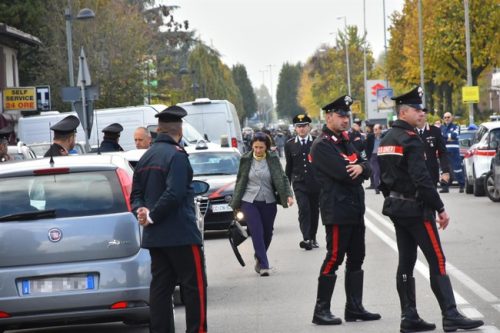Greta Thunberg was banned from Venice for two days and fined after pouring green dye into the Grand Canal during a protest that coincided with the end of the Cop30 conference.
Swedish activist Greta Thunberg staged another high-profile protest in Venice, this time drawing the ire of local officials and residents. She and a group of activists dumped green dye into the Grand Canal and hung a banner reading “stop ecocide” from the Rialto Bridge, actions meant to grab attention more than to persuade.
The city responded by issuing Thunberg a €150 fine and a 48-hour ban on entering Venice, with 35 other activists receiving the same penalties. That modest sanction followed a flash-mob march by protesters dressed in red who moved slowly through tourist crowds to amplify the stunt.
The group responsible, Extinction Rebellion, said its activists also poured green dye into waterways in 10 other Italian cities to call attention to “the massive effects of climate collapse.” Critics say these tactics trade persuasion for spectacle and risk alienating ordinary people who care about the environment but not the theater.
Greta Thunberg has been banned from Venice after she and Extinction Rebellion activists dyed the Grand Canal green.
The 22-year-old climate campaigner has been issued with a €150 (£132) fine and a 48-hour ban on entering the city after a series of stunts over the weekend. A group of 35 other activists were given the same fine and ban.
The climate activists dumped an environmentally harmless dye into the Grand Canal in a protest that coincided with the end of the Cop30 United Nations climate conference in Brazil.
They also strung a banner, reading “stop ecocide”, from the Rialto Bridge across the Grand Canal.
The activists also staged a flash-mob protest in which protesters, dressed in red with veils over their faces, walked slowly through crowds of tourists.
Italy is not a playground for troublemakers!
Greta go back where you came from, thank you. pic.twitter.com/rp8hdDf0os
— LorenzoCaccialupi | ItalianPatriot (@LorenzoCaccia) November 23, 2025
Veneto governor Luca Zaia blasted the stunt as “a disrespectful act towards our city, its history and its fragility” and warned that the prank “risks having consequences for the environment.” Those words landed with ordinary Venetians whose livelihoods depend on a city that suffers under heavy tourist traffic and environmental stress.
Extinction Rebellion began in 2018 in the United Kingdom and built a playbook of nonviolent civil disobedience that includes roadblocks, sit-ins, and theatrical displays. Those methods have won media attention, but they have also prompted questions about tactics that inconvenience citizens and tourists while offering little policy detail.
The movement’s demands call for governments to acknowledge climate risks, cut greenhouse gas emissions, and protect ecosystems, goals that many would support in principle. But the tone and spectacle of some protests turn a public conversation into a partisan circus, making it easier for skeptics to dismiss the message entirely.
The two-day ban and small fine look like a slap on the wrist to activists who thrive on headlines and repeat performances. If the goal is long-term reform, repeating the same stunts guarantees continued headlines but not the policy shifts that actually reduce emissions.
Local officials face a difficult balance: protect their city’s fragile infrastructure and tourism economy while upholding free expression. Venice is a living city with real constraints, and officials are understandably defensive when demonstrations threaten historic sites and the visitor experience.
For conservatives watching these stunts, the issue is straightforward: activism that prioritizes spectacle over sustainable policy solutions undermines credibility. The challenge for those who want cleaner air and better stewardship is to push for concrete, accountable policies rather than viral photo ops that provoke short-term outrage.






